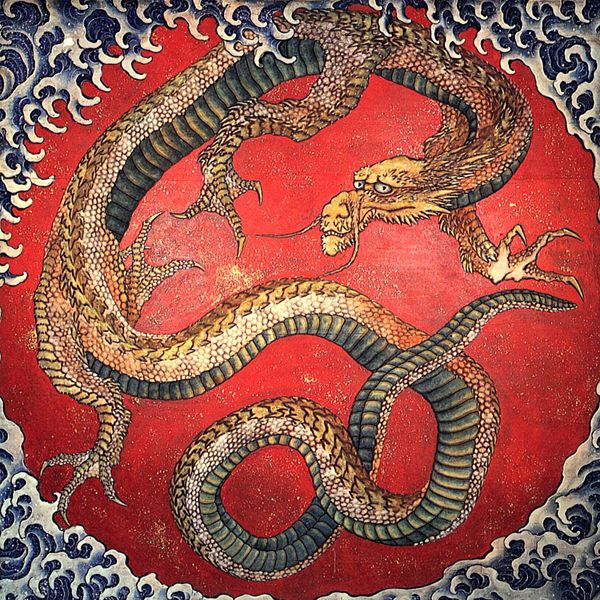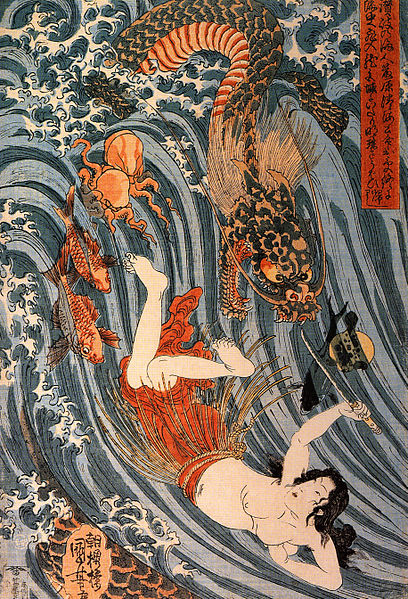Japanese dragons are diverse legendary creatures in Japanese mythology and folklore. Japanese dragon myths amalgamate native legends with imported stories about dragons from China, Korea and the Indian subcontinent. The style and appearance of the dragon was heavily influenced by the Chinese dragon, especially the three-clawed long (龍) dragons which were introduced in Japan from China in ancient times. Like these other East Asian dragons, most Japanese ones are water deities or kami associated with rainfall and bodies of water, and are typically depicted as large, wingless, serpentine creatures with clawed feet.
Japanese sea-dragon, by Utagawa Kuniyoshi
Japanese dragon, by Hokusai
Princess Tamatori steals the Dragon King's jewel, by Utagawa Kuniyoshi.
Emperor Antoku's grandmother rescuing him from a dragon, by Yoshitsuya Ichieisai
A dragon is a magical legendary creature that appears in the folklore of multiple cultures worldwide. Beliefs about dragons vary considerably through regions, but dragons in Western cultures since the High Middle Ages have often been depicted as winged, horned, and capable of breathing fire. Dragons in eastern cultures are usually depicted as wingless, four-legged, serpentine creatures with above-average intelligence. Commonalities between dragons' traits are often a hybridization of feline, reptilian, mammalian, and avian features. Some scholars believe large extinct or migrating crocodiles bear the closest resemblance, especially when encountered in forested or swampy areas, and are most likely the template of modern Asian dragon imagery.
Illustration of a winged, fire-breathing dragon by Friedrich Justin Bertuch from 1806
Qing-era carved imperial Chinese dragons at Nine-Dragon Wall, Beihai Park, Beijing
Dragon-shaped bows on ships in Ystad, Sweden, resembling Viking longships
Several bones purported to belong to the Wawel Dragon hang outside Wawel Cathedral, but actually belong to a Pleistocene mammal.








